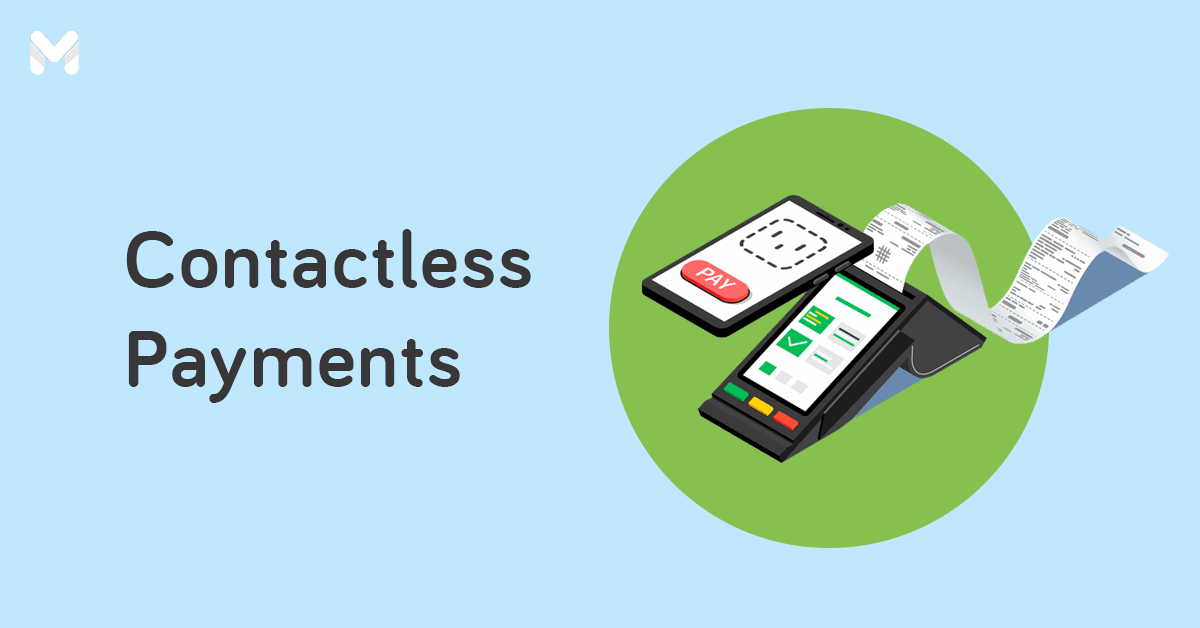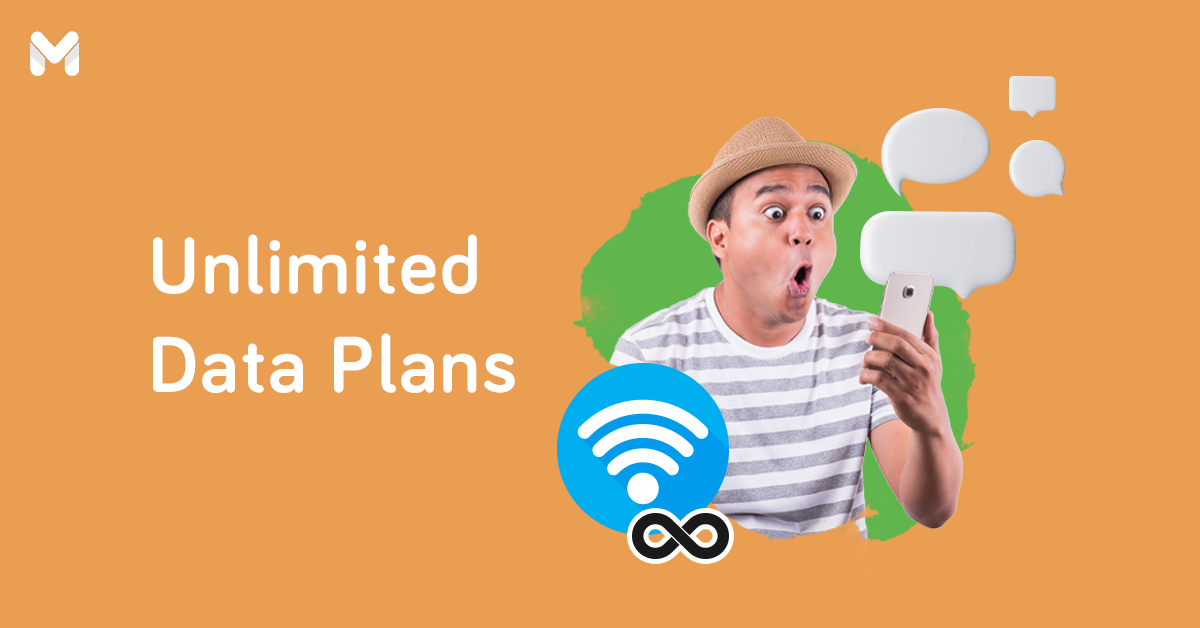The speed of the internet in the Philippines has long been the subject of many discussions in different contexts, ranging from politics to comedy. But have you ever wondered what has led to this telecommunications problem?
In this article, you’ll find the possible reasons behind the status of the country’s internet connection. You’ll get a picture of how the Philippines’ connectivity fares on a global scale.
And if you’re looking for a reliable provider in the Philippines, we have a few recommendations and some helpful tips.
How Fast (or Slow) is the Internet in the Philippines?
Based on the speed test global index released by Ookla in April 2023,[1] the Philippines ranked 86th out of 138 countries when it comes to average mobile internet speed. On the other hand, it ranked 42nd out of 180 countries in terms of average fixed broadband speed.
To give you a better perspective, here are the Philippines’ internet speeds compared to those of our neighboring countries.
Internet Speeds of the Philippines vs. Other Countries
| Country | Average Broadband Download Speed | Average Mobile Download Speed |
|---|---|---|
| Singapore | 242.01Mbps | 71.69Mbps |
| China | 215.80Mbps | 110.10Mbps |
| Hong Kong | 205.19Mbps | 52.61Mbps |
| Japan | 150.62Mbps | 40.76Mbps |
| South Korea | 114.69Mbps | 110.59Mbps |
| Philippines | 92.09Mbps | 25.27Mbps |
| Australia | 52.98Mbps | 79.70Mbps |
| India | 51.12Mbps | 36.35Mbps |
| Bangladesh | 35.96Mbps | 16.47Mbps |
| Iraq | 27.98Mbps | 33.10Mbps |
| Sri Lanka | 20.49Mbps | 15.46Mbps |
The figures above reaffirm that the country’s internet is lagging behind. The country’s average mobile download speed is a far cry from South Korea’s 110.59Mbps. On the other hand, the Philippines’ average broadband download speed is many steps behind Singapore’s 242.01Mbps.
Read more: How to Check Your Broadband Performance with Internet Speed Tests
Average Cost of Monthly Internet Services in the Philippines
The internet in the Philippines is slow, but what makes it worse is the fact that it is also expensive. With that, a lot of us can’t help but feel shortchanged.
So how much is Wi-Fi in the Philippines? Take a look at the table below to get an idea of how the Philippines fares when it comes to the price of the internet.[2]
Note: The prices were converted to Philippine peso using the exchange rate available at the time of this writing (US$1 = ₱56.12).
| Country | Price per Month (with 60Mbps Average Speed) |
|---|---|
| United Arab Emirates | US$98.64 (₱5,535.28) |
| United States | US$69.90 (₱3,922.51) |
| New Zealand | US$53.11 (₱2,980.32) |
| Netherlands | US$44.05 (₱2,471.91) |
| Germany | US$38.03 (₱2,134.09) |
| United Kingdom | US$37.49 (₱2,103.79) |
| Philippines | US$35.44 (₱1,988.75) |
| Japan | US$35.15 (₱1,972.48) |
| Indonesia | US$30.36 (₱1,703.68) |
| Sweden | US$29.46 (₱1,653.18) |
| Malaysia | US$26.38 (₱1,480.34) |
| Taiwan | US$24.03 (₱1,348.47) |
| Finland | US$22.76 (₱1,277.20) |
| South Korea | US$20.80 (₱1,167.21) |
Why is the Internet in the Philippines Slow and Expensive?
-May-19-2023-07-38-51-0460-AM.png?width=674&height=449&name=Pics%20for%20blog%20-%20600x400%20(8)-May-19-2023-07-38-51-0460-AM.png)
There are a lot of reasons the internet connection in the Philippines is almost substandard and unreliable. If you look closer, these reasons are interconnected. It’s like a domino effect; one problem may lead to another.
Below are some of the possible reasons for the sorry state of Wi-Fi in the Philippines.
👉 The Philippines is an Archipelago
The country is blessed with stunning and world-class beaches, which offer a respite from the stress of urban life. And that’s all thanks to the Philippines’ 7,641 islands. However, it turns out that having thousands of islands is a double-edged sword.
Since the islands in the Philippines are not supported by robust infrastructures, bringing materials for the construction of cell towers to different parts of the country is tough. It will definitely take time.
👉 Building Cell Towers is Expensive
The problem with the logistics of the construction of the cell towers is that the transport of materials can be expensive and laborious. However, woes related to time and money also manifest in the application for the construction of the cell towers.
Globe Telecom President and CEO Ernest Cu has already brought the concern out in the open.[3] He said that the process for the permit applications for cell towers is costly and time-consuming. He made it known that they had been experiencing this for many years now.
According to Cu, it takes about 25 to 29 permits and eight months to build a single tower. At this pace, one can safely assume that Globe can build only one cell tower per year. And that leads to a string of problems regarding connectivity.
It’s apparent that much of the burden is still being carried by the private sector.
👉 There Aren't Many Players in the Industry
Another factor that contributes to the poor internet service in the Philippines is the lack of competition. Right now, there are only two giants battling it out in the field: PLDT and Globe Telecom.
While there are many small and mid-sized players, a lot of them don’t provide comprehensive services and are often just dedicated to a specific area of business. Some just focus on providing fixed broadband plans).
When the competition is limited, leading companies will not be compelled to up their game or improve their services and infrastructures. However, things are looking up, especially now DITO, the country’s third telco player, received a 25-year franchise from the government.[4]

What is NTC’s Role in Internet Quality and Speed?
Every now and then, you hear something about the National Telecommunications Commission (NTC) in the news. But what exactly does the Commission do?
The NTC’s job is to make sure that the internet speed being delivered to Filipino consumers is accurate. Together with the House Committee on Information and Communications Technology, the NTC sees to it that the internet every client uses is true to what the service provider has advertised.
As of 2021, the NTC reported that the Philippines has about 22,384 cell sites. Globe has built 10,395 cell sites as of December 2020. Smart, on the other hand, has 10,079. Meanwhile, DITO has 2,360 cell sites.[5]
Still, the country is lagging behind other ASEAN countries. For context, Vietnam has 90,000 cell towers.
List of Internet Providers in the Philippines
-May-19-2023-07-40-04-6785-AM.png?width=600&height=400&name=Pics%20for%20blog%20-%20600x400%20(9)-May-19-2023-07-40-04-6785-AM.png)
While the likes of PLDT and Globe compete for market share, other players offer promising services at competitive prices. Check out your internet subscription options here.
📌 PLDT
One of the two telco giants in the Philippines, PLDT offers unlimited fiber plans with speeds ranging from 100Mbps to 1,000Mbps. The company was once known for offering DSL plans. Looking at its website, the telco now seems to offer only fiber plans.
PLDT Fibr Plans
| Plan | Speed | Limit | Price |
|---|---|---|---|
| PLDT Fibr Plan 1699 | 100Mbps | Unlimited | ₱1,699 |
| PLDT Fibr Plan 2099 | 400Mbps | Unlimited | ₱2,099 |
| PLDT Fibr Plan 2699 | 600Mbps | Unlimited | ₱2,699 |
| PLDT Fibr Plan for 1,000Mbps | 1,000Mbps | Unlimited | Price available upon request |
📌 Globe
Globe is another internet provider in the Philippines that offers fiber connection, which the company calls GFiber. It offers some of the best internet plans—it even claims that its fiber connection guarantees internet connectivity even in locations where building cell sites and towers isn’t possible.
GFiber Plans
| Plan | Speed | Limit | Price |
|---|---|---|---|
| GFiber UNLI 1699 | Up to 200Mbps | Unlimited | ₱1,699 |
| GFiber UNLI 2099 | Up to 300 Mbps | Unlimited | ₱2,099 |
| GFiber UNLI 2499 | Up to 500 Mbps | Unlimited | ₱2,499 |
| GFiber UNLI 3499 | Up to 800 Mbps | Unlimited | ₱3,499 |
| GFiber UNLI 7499 | Up to 1Gbps | Unlimited | ₱7,499 |
📌 Converge ICT
Converge has become one of the best providers in provinces since it offers some of the cheapest internet plans. For as low as ₱1,500 per month, you get broadband internet service at 200Mbps.
Converge Broadband Plans
| Plan | Speed | Limit | Price |
|---|---|---|---|
| Fiber X 1500 | Up to 200 Mbps | Unlimited | ₱1,500 |
| Fiber X 2000 | Up to 400 Mbps | Unlimited | ₱2,000 |
| Fiber X 2500 | Up to 600Mbps | Unlimited | ₱2,500 |
| Fiber X 3500 | Up to 800Mbps | Unlimited | ₱3,500 |
| Fiber Xtreme 7499 | Up to 1Gbps | Unlimited | ₱7,499 |
Read more: LTE Broadband Plans in the Philippines: What are Your Options?
📌 SKY
When they hear the brand SKY, a lot of Filipinos automatically associate it with cable services. However, SKY also offers fiber broadband in the Philippines. They’re one of the cheapest internet providers in the Philippines—you can get a 30Mbps internet service for only ₱999 per month. You also get access to HBO Go for an additional ₱199 per month.
SKY Fiber Unli Broadband Plans
| Plan | Speed | Limit | Price |
|---|---|---|---|
| SKY Fiber Unli Broadband 999 | 30Mbps | Unlimited | ₱999 |
| SKY Fiber Unli Broadband 1299 | 75Mbps | Unlimited | ₱1,299 |
| SKY Fiber Unli Broadband 1699 | 150Mbps | Unlimited | ₱1,699 |
| SKY Fiber Unli Broadband 2299 | 200Mbps | Unlimited | ₱2,299 |
📌 DITO Telecommunity
If you’re looking for one of the cheapest internet plans in the Philippines, you may want to check DITO. The said company offers 5G postpaid service for home use. Plans start at ₱990.
Currently, DITO’s home internet business only offers the following:
DITO Home 5G Postpaid Plans
| Plan | Speed | Limit | Price |
| Unli Postpaid Plan 1490 | Average speed of 55Mbps | Unlimited | ₱1,490 |
| Data-Capped Postpaid Plan 990 | Average speed of 55Mbps | Capped at 200GB per month | ₱990 |
DITO’s 5G postpaid plans include a free 5G modem and DITO Rewards (upon bill payment). For Postpaid Plan 990, the unused data will be carried over to the next month.
If you use up your Plan 990 data for the month, subscribe to DITO’s booster promo to enjoy an extra 20GB for ₱190. This deal is valid for the first 30 days.
Other perks also come with your subscription. For one, you’ll get bonus access to Prime Video for 30 days if you subscribe from January 26, 2023 onwards.
Read more: Best Prepaid Wi-Fi Options for Remote Workers and Online Students
📌 Starlink
Earlier this year, it was announced that Starlink, Elon Musk’s internet service company, is already available in the Philippines.
You can enjoy Starlink internet in the Philippines for a monthly fee of ₱2,700. However, you’ll have to pay a one-time hardware fee of ₱29,320.[6]
So what’s the difference between Starlink's service and a standard internet connection? A standard connection usually relies on broadband, which means that your house has to use a physical line to access the internet.
Meanwhile, Starlink uses satellite technology. This means that their internet connection is available anywhere in the world. Download speed is reportedly faster, too. For instance, Starlink’s residential service can deliver up to 200Mbps of download speed.
Note: The prices and service inclusions of internet plans in this article are subject to change without prior notice. Other fees for pertinent services, such as installation, are not yet factored in. With that, we strongly advise that you get in touch with your chosen provider’s customer service team to get the exact price of the internet service you’re planning to get.
How to Choose an Internet Provider in the Philippines
-May-19-2023-07-41-55-8631-AM.png?width=600&height=400&name=Pics%20for%20blog%20-%20600x400%20(10)-May-19-2023-07-41-55-8631-AM.png)
To make the most of your internet service, you have to get a package that responds to your needs. Here are some questions to ask to determine the right internet plan for you:
🤔 What is the Internet For?
Look at your lifestyle first. If you know the purpose of your internet connection, you’ll get an idea of how much to budget and which plan to get.
For instance, getting a plan with more bandwidth makes sense if your kids are taking online classes at home. If you’re a virtual assistant who lives alone, a starter or mid-tier package may be right for you.
🤔 How Many People Are at Home?
The quality, speed, and stability of your internet connection largely depend on the number of users. The more people using the internet, the slower the connection gets. With that in mind, choose an internet plan designed to accommodate a specific number of users.
🤔 What Are Your Usual Online Activities?
Video streaming and online video calls use a lot of data. The same goes for transfers of heavy files. If these are your usual activities, it will be impractical to get a data plan with a cap. Instead, choose an unlimited plan.
Read more: Goodbye Lag: How to Control Bandwidth for Internet Speed
🤔 What are the Devices You’ll Connect to the Internet?
The performance of your internet connection sometimes depends on the device you’re using. For one, devices directly connected to the internet via an Ethernet cable, such as personal computers, may enjoy faster speeds compared to Wi-Fi devices. Smart TVs and game consoles may also benefit from wired connections.
Older devices may not be able to receive internet signals well. They may not have the hardware and features to process new web pages and online graphics.
🤔 How Much is Your Budget?
Finally, you need to work around your budget. Figure out how much you’re willing to set aside for your monthly subscription.
If you’re only doing basic surfing, an unlimited plan with a rather hefty price tag may not be a practical choice. Instead, choose a plan with a data cap that costs around ₱900.
Final Thoughts
Having an internet connection may still sound like a privilege in our country, especially since Filipinos pay so much and receive so little. But in reality, a strong internet service is already a right, as it empowers people to stay informed and enables them to earn income.
While the internet in the Philippines continues to lag behind in the region (and globally), new technologies are being developed to make sure that every Filipino stays connected. More Wi-Fi providers are also entering the market, thus providing a wide range of choices.
Meanwhile, if you want to save on your internet bill, use a credit card that offers discounts, rebates, points, and other perks. Check out some of the best credit cards for bills payment below:
💳 BPI Amore Cashback
- Minimum monthly income requirement: ₱30,000
- Bills payment perks:
- 1% cash back on utility payments
- Auto-Charge – Charge your utility bills automatically
💳 HSBC Red Mastercard
- Minimum monthly income requirement: ₱16,667
- Bills payment perks:
- 4x reward points on online, shopping, dining, and overseas spend
- HSBC AutoCharge – Pay multiple utility bills automatically
- 1 reward point for every ₱20 spend
🎁 Free Gift from Moneymax: Giftaway Cash Credits, JBL Flip 6, or Dolce Gusto Piccolo XS
Eligible cards: HSBC Red Mastercard, Live+ Credit Card
Promo period: Until September 30, 2024
Not an HSBC credit cardholder yet? Apply for an eligible HSBC card through Moneymax during the promo period (and get approved subsequently) to receive an exciting welcome gift! Choose from free Giftaway cash credits worth ₱3,000, a JBL Flip 6 worth ₱7,499, or a Dolce Gusto Piccolo XS worth ₱5,199.
This Moneymax HSBC Giftaway/JBL/Dolce Gusto promo runs until September 30, 2024 only. Hurry and apply now!
Per DTI Fair Trade Permit No. FTEB-201324 Series of 2024. Terms and conditions apply.
💳 Metrobank Rewards Plus Visa
- Minimum monthly income requirement: ₱29,167
- Bills payment perk:
- 2 rewards points per ₱20 spend on telecom bills
- 1 rewards point per ₱20 spend on utilities charged to Bills2Pay
- Bills2Pay Auto-Charge Program – Charge your monthly utility bills automatically
💳 Security Bank Complete Cashback Platinum Mastercard
- Minimum monthly income requirement: ₱65,000
- Bills payment perk:
- 3% rebate on bills payment
- SimplyPay – Use your credit card to pay for utilities that require a bank
deposit - Security Bank Bills Assist Program – Settle your monthly bills automatically
Sources:
- [1] Speedtest Global Index
- [2] Price Rankings by Country of Internet (Numbeo)
- [3] Streamlined Application Rules as Duterte Orders to Fast-Track Cell Site Constructions (CNN Philippines, 2020)
- [4] House Grants 25-Year Franchise for PH’s Third Telco Player Dito (Philippine News Agency, 2020)
- [5] PH Now Has 23K Cell Sites, Still Behind in ASEAN (Manila Bulletin, 2021)
- [6] Elon Musk’s Starlink Internet Service Now in Philippines (The Philippine Star, 2023)









-2.png?width=734&height=214&name=image%20(8)-2.png)




